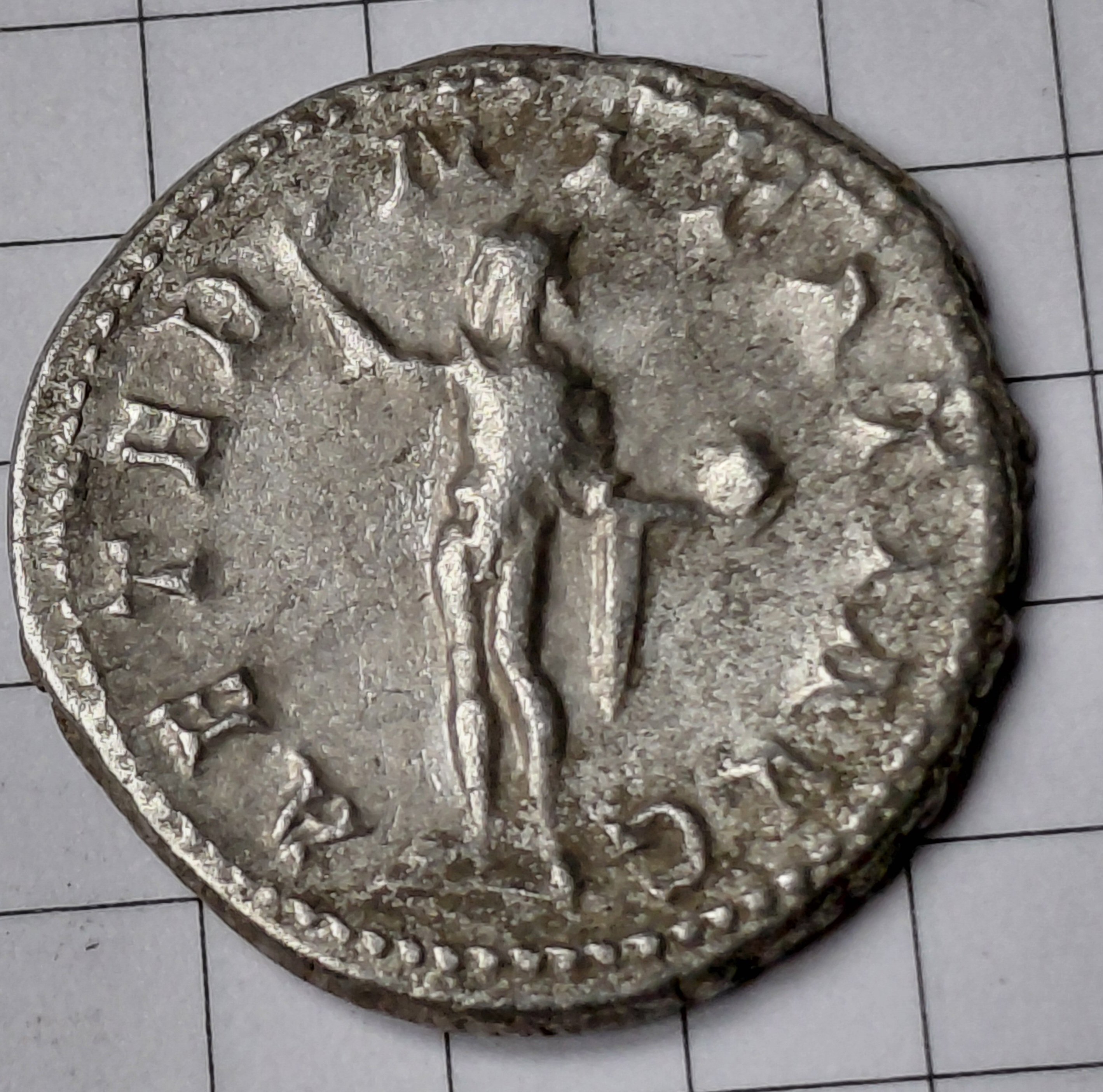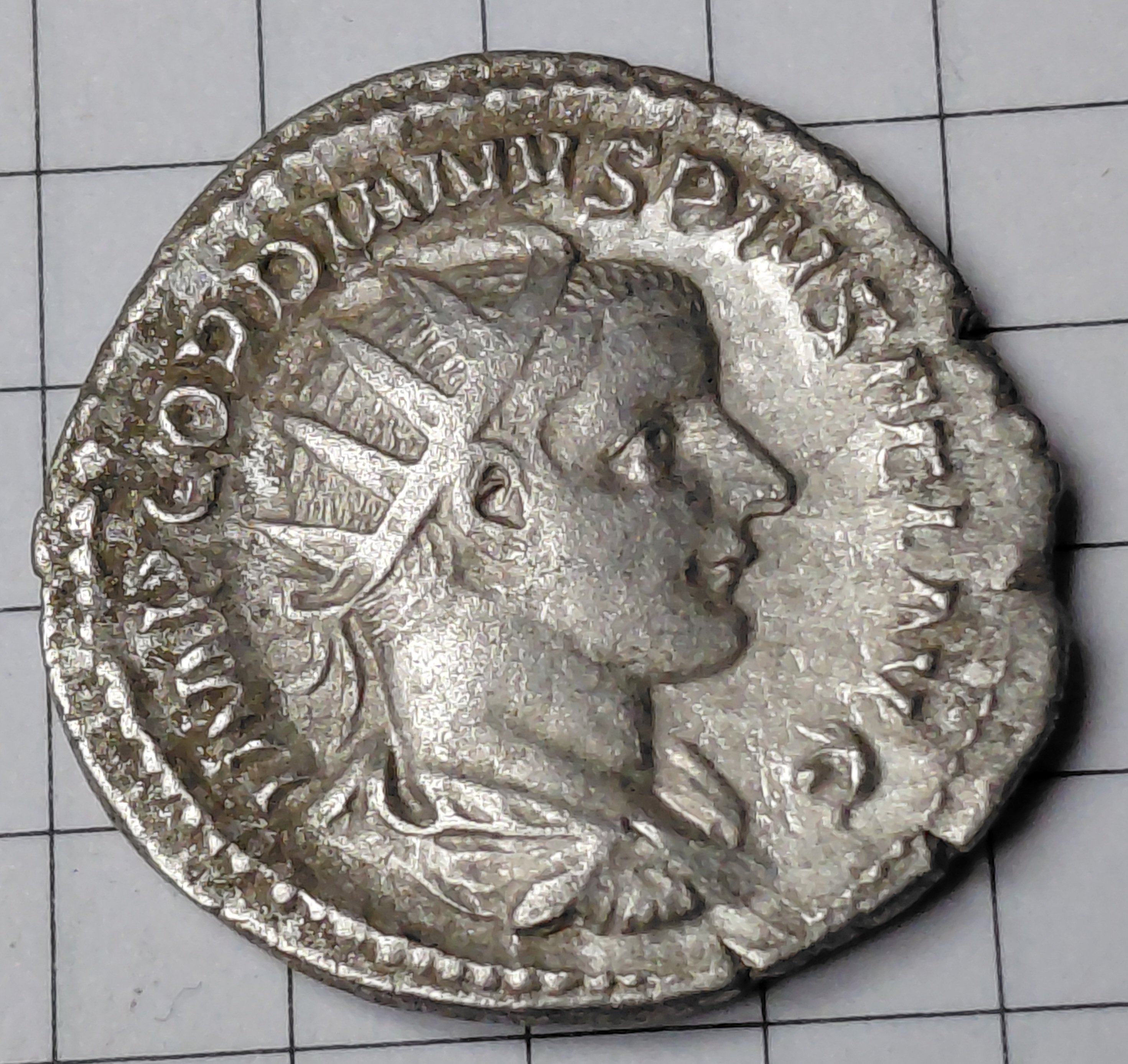A Antoninianus of Gordian III - authentic?
 Göttinger
Posts: 128 ✭✭✭
Göttinger
Posts: 128 ✭✭✭
Dear collectors and enthusiasts of Roman coins, recently I purchased a collection of junk silver coins, wich also contained a Antoninianus of emperor Gordian III. Since I have no clue about ancient coins I need your help to further identify the coin and also to determine it's authenticity. If you need further informations or better pictures, just let me know.
Thank you in advance and best regards,
Göttinger
Weight: 4.8 grams
Diametre: 20.5 mm (minimum), 22 mm (maximum)


0
Comments
The coin if perfectly fine. Gordion III Antoninianus are some of the most common and affordable ancient coins. If you're worried about value, maybe $60 in this condition. Before 2020, it would have been about $35.
It looks ok to me, but I am not specialised in ancients. Still, I had a few very similar, these are common.
Thanks! Since I only paide melt value for it, I'll keep the coin. I didn't expect it to be anything valuable, but I had never found a ancient coin in my junk silver purchases before.
Best regards from Germany,
Göttinger
It looks real to me. I wish I could find one of those in a CoinStar machine!
For a more detailed identification:
Gordian III, silver antoninianus, reverse AETERNITATI AVG (to the eternal emperor), the sun-god Sol standing. The coin does not bear a date or mintmark; stylistic and archaeological evidence indicates it was minted in Rome with a date range of issue between AD 241 and 243, so towards the end of the reign of the emperor. The usual catalogue reference quoted is "RIC IV.3 Gordian III 83". https://numismatics.org/ocre/id/ric.4.gor_iii.83
Numista page: https://en.numista.com/280814
Gordian III died in battle in what is now central Iraq - whether he was killed by the Sassanian Persians or by his own mutinous soldiers remains unknown, though the Persians were quick to claim credit. So, perhaps his reign wasn't quite as "eternal" as he had hoped he'd be. Yet, here we are 1800 years later, talking about him, so there's that.
By the end of the reign of Gordian III when this coin was made, the silver content of the antoninianus had fallen to about 25% (lower than the silver content of a war nickel) - that's high enough for the coins to still "look silvery", but low enough for some catalogues to classify these coins as "billon" rather than "silver".
Antoniniani of Gordian III are quite commonly found in hoards, and quite commonly still in pristine condition - they are perhaps the easiest Roman coins to obtain in Unc condition, or as near to Unc condition as ancient coins can get. It seems it was the destiny for a great many of these coins for them to be struck, then almost immediately buried by the soldiers they were given to as military pay.
Roman emperor Marcus Aurelius, "Meditations"
Apparently I have been awarded the DPOTD twice.
Thank you so much - I really appreciate all the informations you researched on my coin. It will always have a special place on my collection.